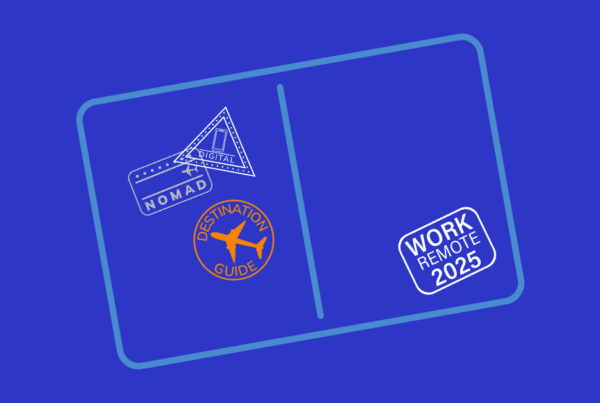
In 2020, traditional office workers got a taste of what freedom is like.
Prior to the pandemic, three-quarters of workers had never worked remote and fewer than six percent were working primarily remote. Within mere weeks, those numbers drastically changed.
In May 2020, The Bureau of Labor and Statistics reported that 35 percent of Americans worked remotely. And after more than a year of working remotely due to COVID, these workers are not going back to the way things were.
In fact, a significant chunk of workers have taken the step to sever their dependence on their full-time job and put faith in themselves through freelance work. In December 2020, a survey from freelance marketplace Fiverr found 68 percent of remote workers were interested in taking on freelance work.
And as business managers are still deciding what’s best for company structure, workers have had enough experience with flexible working that their minds are made up.
According to a survey from Upwork, another freelance marketplace, companies are at risk of losing millions of employees. Currently, 20 percent of workers – or 10 million Americans – are considering transitioning to full-time freelancing to take advantage of the flexibility that is inherent in self-employment. If this plays out, the freelance market would jump 17 percent.
FlexTal’s own survey echoes those sentiments, with respondents showing interest in the flexible-working lifestyle. If a dependable freelance income could be guaranteed, 40 percent of respondents said they would consider leaving their current roles to pursue a freelance career.
Anyone choosing to ignore these trends will only create extra work for themselves. Data shows flexibility is the future, and it has been a long time coming. Here’s why.
Technology has outdated the traditional working model
When the 9-to-5 model was established, nobody had smartphones. Heck, nobody even had computers. You woke up, you went into a physical work location, and after you completed your agreed-upon eight hours, you went home.
Until work could reach us at home.
Now more than ever, employees are being expected to do work outside of their job descriptions or agreed-upon hours. The ADP Research Institute’s People at Work 2021 report found workers are putting in an average of 9.2 hours in unpaid overtime, up from 7.3 hours a year ago. Those working the most? Americans.
According to the report:
“In just a year since the pandemic struck, workers in the US have more than doubled the amount of time they are working for free on average, clocking up nine unpaid hours per week now, up from 4.1 pre-pandemic. The proportion of US workers who say they do not undertake any extra hours for free has dropped from more than half (55 percent) to a third (32 percent) in a year.”
This data shows that the traditional model is severely clashing with our modern culture. Employees are expected to be at their desks for at least eight hours a day, in addition to the expectation to communicate and problem solve after hours. In this type of format, it is impossible for “work-life balance” to exist, no matter how many corporate seminars are conducted on the topic.
As a result, we are seeing a phenomenon happening. American workers are beyond burned out and are fueling what we now refer to as “The Great Resignation.” In August, data found the workforce is missing 4.3 million Americans, representing the biggest participation drop since World War II.
Between high workforce expectations and managing life in a global pandemic, Americans have been pushed to their brink.
Gallup’s State of the Global Workplace: 2021 Report even found Americans are some of the most stressed workers in the world. The majority (57 percent) of U.S. and Canadian workers reported they feel stress on a daily basis, compared to 43 percent globally.
So, how do we address the phenomenon?
We embrace flexibility and employee autonomy.
We’re not in the 1950s anymore, Toto
In 2021, it is rare to find the traditional 1950s nuclear family where a husband is responsible for work outside the home and the wife is responsible for work within the home. For modern families, it’s just a given that both parents will work.
In April 2021, The Bureau of Labor and Statistics reported workforce participation for women with children under 18 was 71.2 percent, while workforce participation for men was 92.3 percent. This shift, though, has been particularly difficult on women, who are still expected to carry out traditional gender roles. Even though they are working more, women in heteronormative relationships are still expected to carry the brunt of the housework.
Data from Pew Research found 59 percent of women do more housework than their male partner. Only six percent say their partner does more. When you look at the data from men, 46 percent said the responsibilities are shared about equally, 20 percent say they do more of the work, and 34 percent say their spouse or partner does more.
Stress for women is not just happening at home, either. The Hartford’s July 2021 Future of Benefits Pulse Survey found there is a burnout gap between men and women, with 68 percent of female U.S. workers experiencing burnout at work, compared to 52 percent of male workers.
McKinsey research also echoes this for women:
“They’ve grappled with a “double shift” of household responsibilities, mental health challenges, a more difficult remote-work experience, and concerns about higher rates of unemployment—particularly among mothers of color and single mothers. These burdens come on top of structural barriers for working women, including being the “only” woman in the room and playing an allyship role for others.”
With COVID pushing more of these discrepancies to the surface, women are currently leaving the workforce at higher rates than men. In February 2021, the number of women in the workforce dropped 3.1 percent, compared to 2.2 percent for men.
In the same McKinsey research, 33 percent of working mothers were considering downshifting their careers or leaving them completely due to added stress from COVID, pushing The Great Resignation even further.
Our workers need flexibility to succeed
Now, imagine if those women – and fathers, too – had the freedom to take care of their personal responsibilities without fear of work repercussions. To be able to take care of a sick child or schedule necessary appointments without worrying about a micromanaging boss obsessing over your calendar.
For the majority of Americans, this shift is life-changing. And once again, there is overwhelming data to back it up.
In Buffer’s 2021 State of Remote Work report, an astounding 97.6 percent of respondents said they would like to work remotely – at least some of the time – for the rest of their careers. When asked about the top benefits of working remotely, those polled said the ability to have a flexible schedule (32 percent), the flexibility to work from anywhere (25 percent), not having to commute (22 percent), the ability to spend time with family (11 percent) and the ability to work from home (8 percent).
Supporting the notion that flexible work is beneficial for parents and caretakers, the report also found that of the 35 percent of respondents that are parents or caretakers, 48 percent of those pursued remote work opportunities to better fit their personal needs.
For those organizations looking to keep their top talent, offering a flexible working environment is the way to go. Those not willing to budge? Get ready to be a key player in The Great Resignation.
Lindsay Patton is a self-employed writer and social media strategist. A leader for most of her career, Lindsay has managed more than 250 direct employees and loves mentoring young talent to help grow their skills. She spent seven years as a reporter and editor and is still an active writer and journalist. In 2016, Lindsay started taking social media seriously and the skill quickly became one of her specialties. Within the past two years, Lindsay has been invited to speak on social media and leadership in the workplace by Ernst & Young, Social Media Day PHL, The W.E.L.L. Summit, and more. She has found happiness in the self-employed life because it allows her the flexibility to spend quality time with her husband and their two goofball dogs.




